3.2 Desktop Settings
Use the settings under the Desktop category to configure the appearance and behavior of your KDE desktop.
3.2.1 Configuring Desktop Behavior
Click .
Use this module to configure the behavior of your desktop. This is where you would go to configure options such as showing or hiding desktop icons, showing tooltips and icon layout. You can also specify if you want to see previews of particular file types on the desktop, and which devices you want to see icons for.
Figure 41 KDE Control Center Behavior Dialog
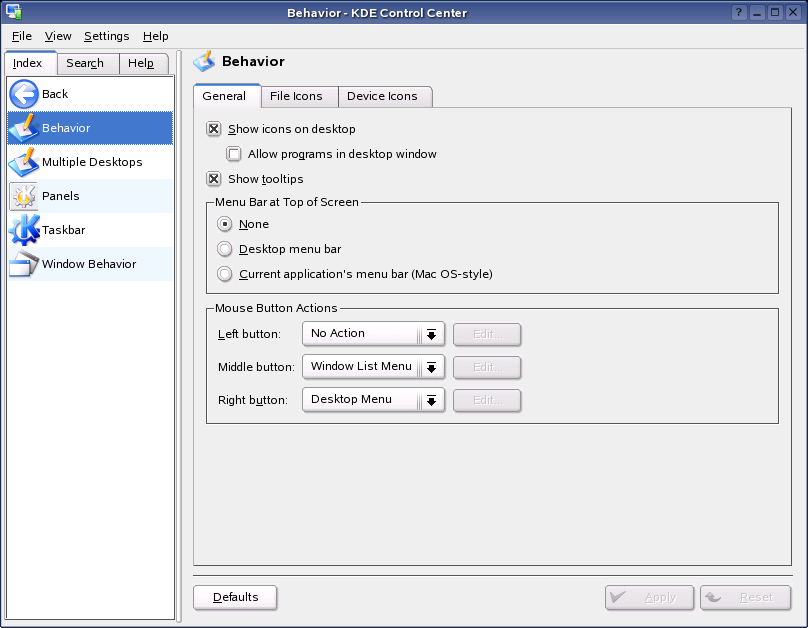
3.2.2 Configuring Multiple Desktops
Click .
The Multiple Desktops dialog lets you determine the number of virtual desktops or workspaces you want to have, and what you want them to be called. By default, KDE has four virtual desktops, and you can configure up to twenty. You can also enable switching between virtual desktops using the scroll button on your mouse.
Figure 42 KDE Control Center Multiple Desktops Dialog
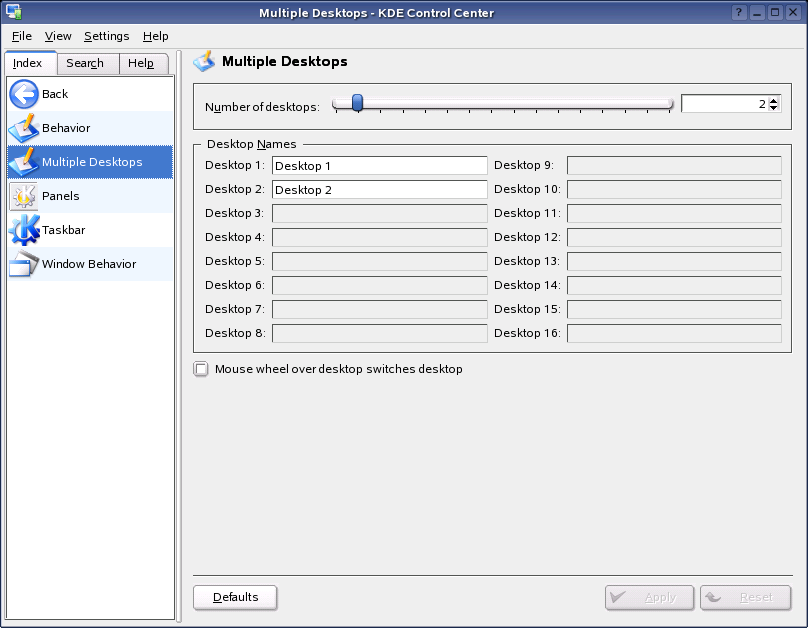
3.2.3 Modifying Panels Options
Click .
Use this module to modify options to do with Kicker (the bottom panel) and other KDE panels. Among the options are size, position, length, and display. You can also modify the appearance of the panel with transparency, background images, and icon zooming. This is also where you can configure various menu options, including the applications you want to show on your N menu.
Figure 43 KDE Control Center Window Panels Dialog
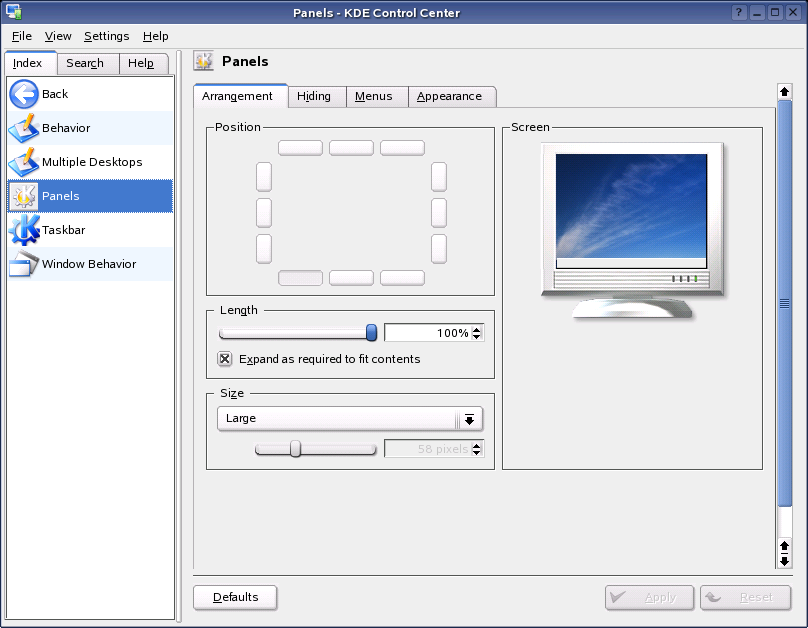
See Managing the Main Menu for more information.
3.2.4 Setting Taskbar Options
Click .
The Taskbar module let you configure options related to your taskbar. You can configure whether to show windows from all desktops, grouping of similar tasks, and what actions you want to assign to your mouse buttons.
Figure 44 KDE Control Center Taskbar Dialog
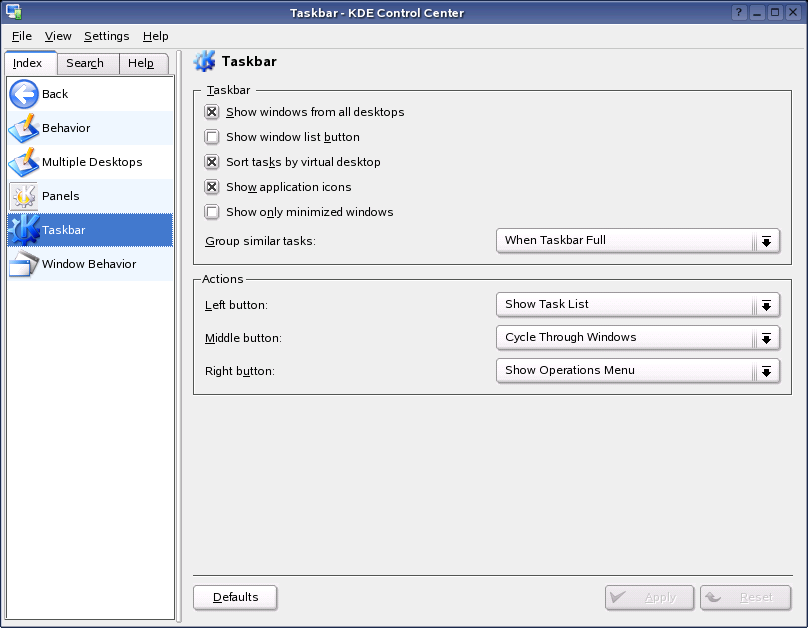
3.2.5 Configuring Window Behavior
Click .
This is where you configure options related to the behavior of KDE’s window manager, KWin. KWin is extremely configurable and has advanced features such as focus stealing prevention and different focus policies such as focus follows mouse. You can also configure what actions you want to bind to certain keys and mouse events.
Figure 45 KDE Control Center Window Behavior Dialog
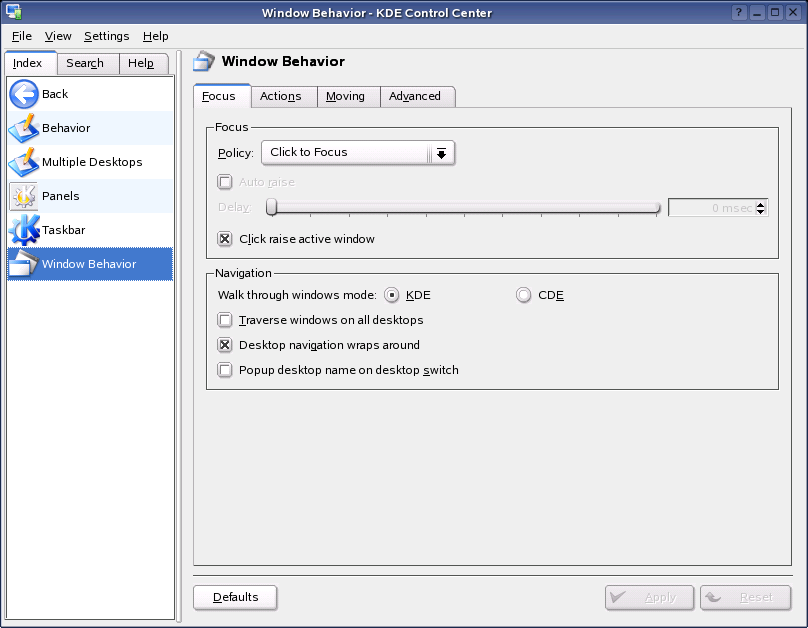
For more information, see The K Window Manager Handbook.